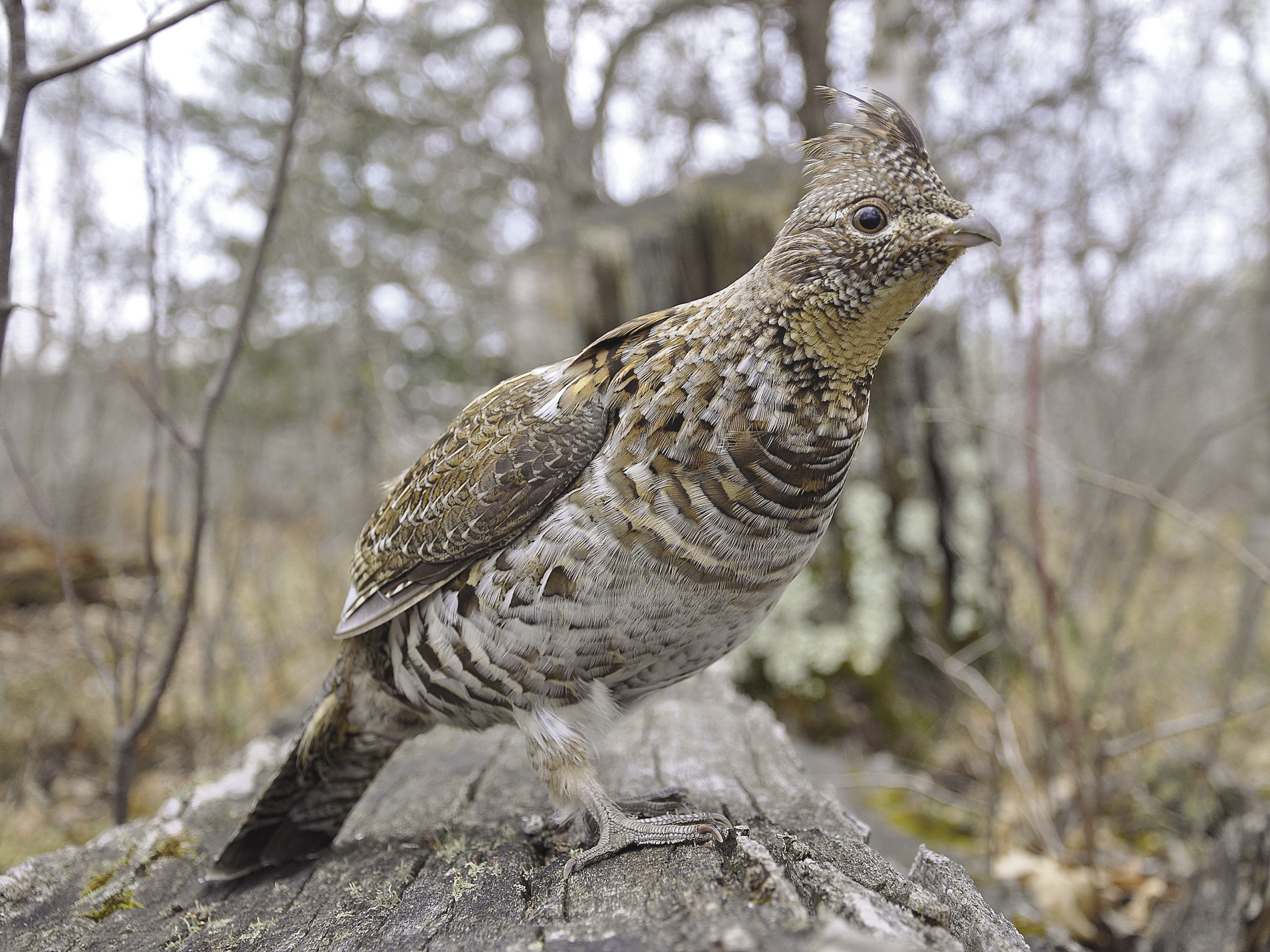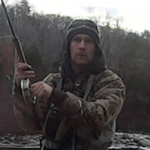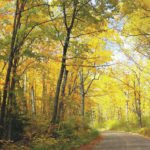After he went grouse hunting last fall, Ted Dick had to eat some crow. As the Minnesota DNR’s forest game bird coordinator, Dick had predicted, based on an uptick in 2017 spring drumming counts, that grouse hunters would have a banner year. Six months later, the word from the aspen woods was that birds were few and far between. In his own rambles through the thickets, Dick reached the same conclusion.
“My hunting was lousy last year,” he says.
The big question is: Why? For decades, the annual ruffed grouse harvest has tracked closely with the spring drumming counts, where wildlife officials drive and stop along designated routes to listen for the “drumming” wingbeats of breeding males. Over many decades, wildlife biologists have identified that ruffed grouse populations follow a roughly 10-year population cycle from scarcity to abundance. The cause of the cycle isn’t understood.
The 2017 drumming counts showed strong increases over the previous year, leading Dick and other biologists to believe the population was at or near a cyclic high. But that didn’t pan out for the fall hunt. Although he was still waiting for harvest statistics from the DNR’s annual small game survey, he was confident, based on his experience and that of many other hunters, that comparatively few grouse were bagged last year. A similar pattern emerged from Wisconsin and Michigan, too.
Some hunters think extremely wet and cool weather during the June, 2017 nesting season may have had a negative effect on chick survival. Dick says there is no science showing cold, wet weather affects hunting success. Many hunters postulate that the northward march of wild turkeys in Minnesota is leading reduced grouse numbers due to predation of eggs and chicks. Again, Dick says there is no scientific research to support the theory. He says grouse must avoid a long list of predatory species in order to survive.
As scientists scratch their heads and try to decipher what is going on with grouse, they’ve agreed to investigate a new possibility: West Nile Virus. Further east in Pennsylvania, biologists believe the disease, which affects birds as well as humans and other mammals, has devastated ruffed grouse. Research conducted in that state compelled biologists in Minnesota, Wisconsin and Michigan to launch a pilot program to look for evidence of the virus in their respective states. Working with hunter volunteers, the Minnesota DNR hopes to collect and examine blood samples from 400 grouse this fall.
Even without the possible presence of West Nile Virus, Minnesota grouse have a number of factors working against them. Dick, who began hunting grouse in northcentral Minnesota in the early 1970s, says that since about 2000 there seem to be fewer birds in the woods, even in good years. Perhaps this reflects the changes in our forests.
Remember when you used to be able to count on tracking snow during deer season? Dick says that on average, we’ve had less snow cover since the turn of the century and more irregular weather events like Christmas-season rains. For grouse, this means fewer winter days when the snow is deep enough for them to burrow into it and roost. A grouse that is tree-roosting during the winter is more vulnerable to predators and the elements.
While never static, our forests are changing, too. Part of this is due to less industrial demand for wood, which has led to an overall reduction in timber harvest. Dick says that on the Chippewa National Forest from 1996 to 2016, the amount of aspen under 20 years old—prime grouse habitat—was reduced by half due to less harvesting. In contrast, the DNR has ramped up cutting on state forest lands, presently harvesting 400,000 cords of aspen annually. Some biologists worry we may reach a point where there is too little older forest on state lands.
Ruffed grouse remain Minnesota’s most popular game bird even though hunting participation has declined. Dick says we now have 80,000-100,000 grouse hunters. In the past, significantly more hunters would head into the woods during years when the population cycle was at a high point. That no longer occurs.
Traditionally, grouse hunting was the primary way kids in northern Minnesota were introduced to hunting. Many began by following along with a parent or another adult at a young age, graduating to first a BB gun and then a shotgun as they became older. Because grouse hunters really don’t need anything more than a shotgun and a comfortable pair of boots, it is a great entry point for new hunters. At least it used to be.
As with any outdoor activity, newcomers have trouble fitting grouse hunting into their busy schedules. Even if they are able to do so, they may not have hunting opportunities available nearby. The irony is Minnesota has millions of acres of public forests open to grouse hunting. The rub is that most of the land is in the northern half of the state, a long drive from the Twin Cities metro.
Even with fewer hunters, Dick says he hears complaints from some that forests have become too accessible. This is in part due to the ubiquitous presence of all-terrain vehicles, as well as the development of road systems to accommodate logging. That said, grouse hunters ought to be able to find satisfactory elbow room on most public lands.
Despite a dismal forecast for 2018—the spring drumming counts indicate the population is headed into a cyclic low point—ardent grouse hunters will still be out there. For some, the hunt is about time spent with trained dog. For others, a grouse outing is an excuse for a pleasant stroll through the autumn woods. In either case, flushing a few birds is perhaps less important than just being out there during a down year. At least, that’s what we tell ourselves.






